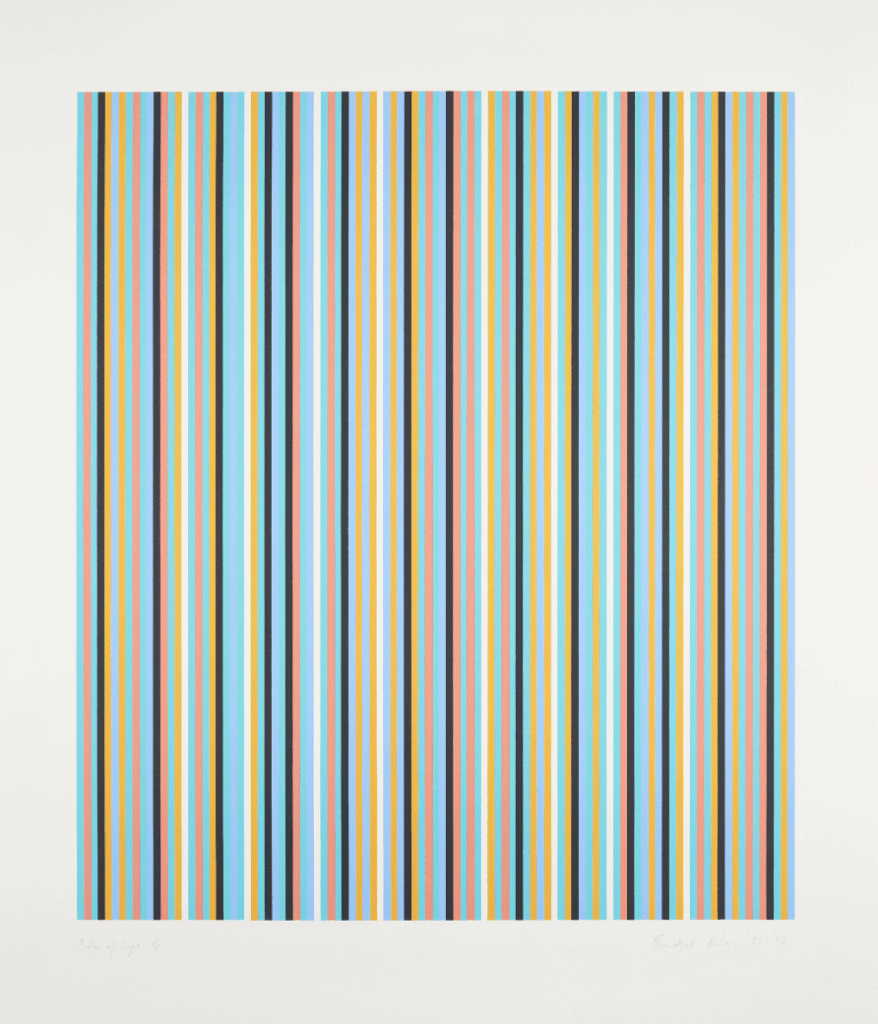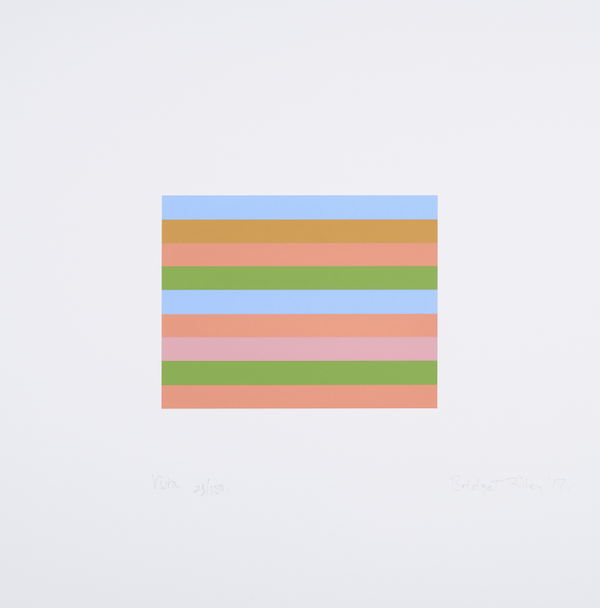To encounter a Bridget Riley print is to be momentarily disoriented from one’s sense of visual certainty. Shapes appear to shift, lines flicker, and colours pulse across the surface in carefully controlled rhythms.
What initially seems like a flat composition quickly becomes dynamic, an optical experience that is both precise and absorbing.

Riley first gained recognition in the 1960s for her striking black and white compositions that challenged conventional perception. Often associated with the Op Art movement, her work explores the possibilities of optical engagement without relying on illusion alone. Riley’s practice has always been grounded in close observation of nature, rhythm, and the act of seeing itself. Her work is not about the illusion for its own sake, but about how the eye responds to a visual language, how we see, and how we physically and emotionally engage with form, contrast, and pattern.
By 1965, Riley had achieved international prominence. Her inclusion in The Responsive Eye at the Museum of Modern Art, New York, positioned her among the most influential artists of her generation. Three years later in 1968, she became the first woman to win the International Prize for Painting at the Venice Biennale, an important moment in the recognition of women artists on the global stage.
What is less widely known, but equally significant, is Riley’s long-standing engagement with printmaking. Since producing her first screenprint in 1962, she has treated the medium not as a means of reproduction, but as a central part of her artistic practice. Prints have allowed her to distill, refine, and test compositional ideas that inform her larger paintings.
Her early prints from the 1960s focused on monochromatic geometry of spirals, stripes, and repeated forms that created visual tension and spatial depth. Untitled (Based on Movement and Squares) (1962) remains one of her most iconic works from this period and is widely regarded as a landmark of both Op Art and post-war abstraction.

By the 1970s, colour became a central tool in her practice. Not just for aesthetic interest, but as a tool of visual orchestration. Riley used colour to explore harmony, optical interference, and rhythm. The screenprinting process gave her control over pigment, layering and contrast, making the technical process an essential part of her practice.
What stands out across Riley’s career is her consistency. While her work has evolved from sharp black and white compositions to undulating waves of colour, her core concerns have remained unchanged – how the eye sees and how the body feels in response. Even her most vibrant and expansive colour prints are rooted in the same principles that she explored in her earliest works.
Today, Riley’s prints are highly collectable. With just over 100 editions produced across her career, compared to nearly 700 paintings, they offer collectors a focused and accessible entry point into her practice. They are also recognised not as supplementary to her paintings, but as standalone contributions to her oeuvre.
Whether drawn to the structured rhythm of her early black and white prints or the colour complexity of her later works, Riley’s prints offer an extraordinary blend of precision, feeling, and visual intricacy. These works continue to hold attention, and like the best art, they continue to surprise long after you first encountered them.
By Hannah Ryan, Senior Art Specialist & Manager of Specialty Auctions
Top Image: Artist Bridget Riley with Nataraja 1993 August 1994/ Alamy
August 2025
